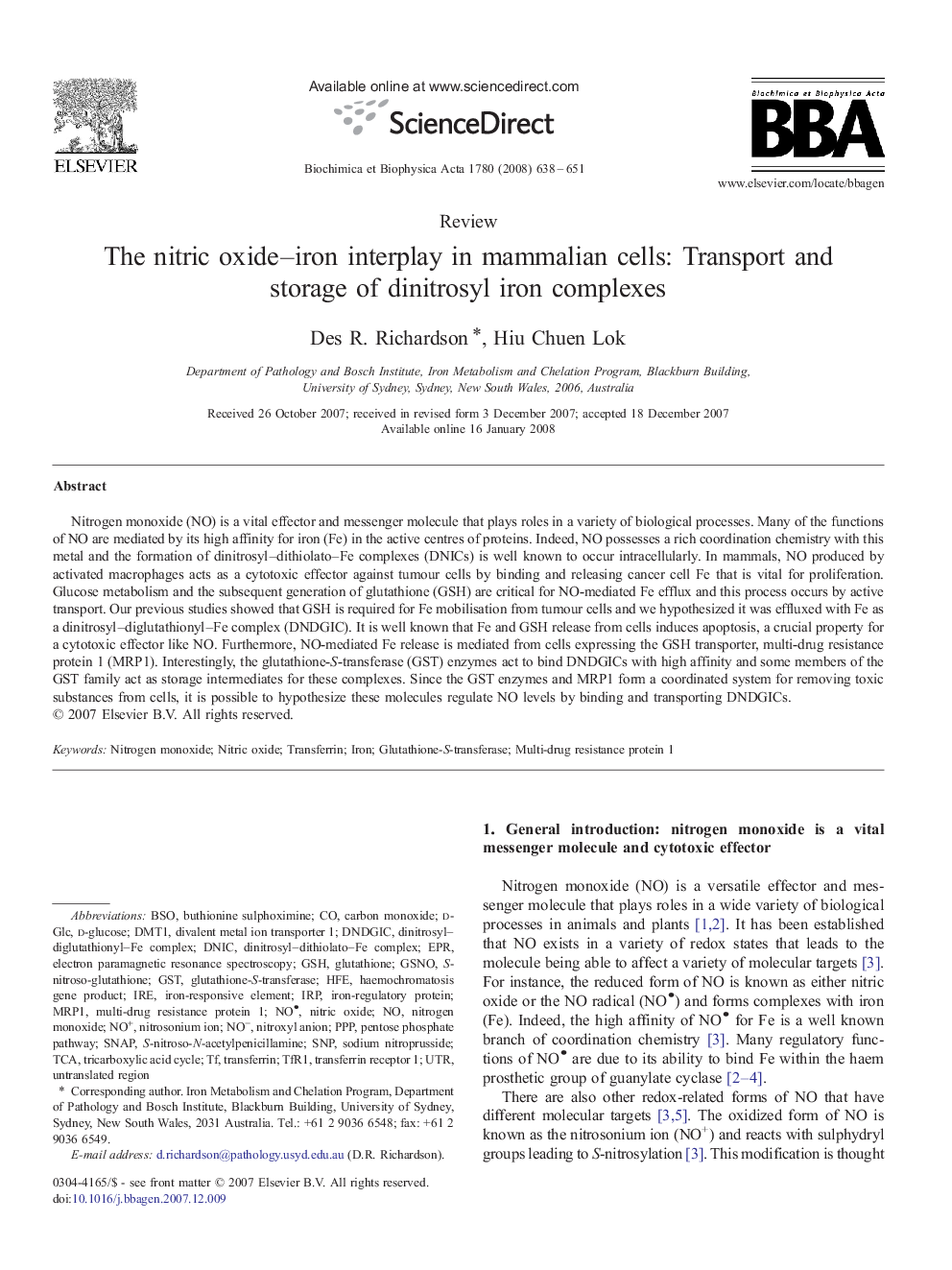| Article ID | Journal | Published Year | Pages | File Type |
|---|---|---|---|---|
| 1948362 | Biochimica et Biophysica Acta (BBA) - General Subjects | 2008 | 14 Pages |
Nitrogen monoxide (NO) is a vital effector and messenger molecule that plays roles in a variety of biological processes. Many of the functions of NO are mediated by its high affinity for iron (Fe) in the active centres of proteins. Indeed, NO possesses a rich coordination chemistry with this metal and the formation of dinitrosyl–dithiolato–Fe complexes (DNICs) is well known to occur intracellularly. In mammals, NO produced by activated macrophages acts as a cytotoxic effector against tumour cells by binding and releasing cancer cell Fe that is vital for proliferation. Glucose metabolism and the subsequent generation of glutathione (GSH) are critical for NO-mediated Fe efflux and this process occurs by active transport. Our previous studies showed that GSH is required for Fe mobilisation from tumour cells and we hypothesized it was effluxed with Fe as a dinitrosyl–diglutathionyl–Fe complex (DNDGIC). It is well known that Fe and GSH release from cells induces apoptosis, a crucial property for a cytotoxic effector like NO. Furthermore, NO-mediated Fe release is mediated from cells expressing the GSH transporter, multi-drug resistance protein 1 (MRP1). Interestingly, the glutathione-S-transferase (GST) enzymes act to bind DNDGICs with high affinity and some members of the GST family act as storage intermediates for these complexes. Since the GST enzymes and MRP1 form a coordinated system for removing toxic substances from cells, it is possible to hypothesize these molecules regulate NO levels by binding and transporting DNDGICs.
